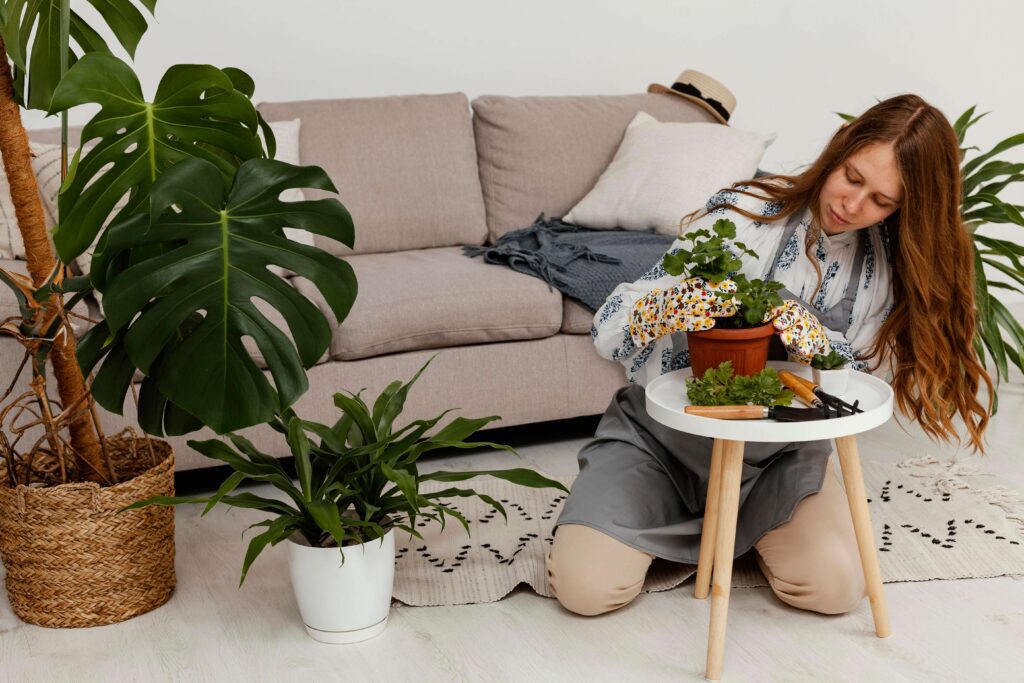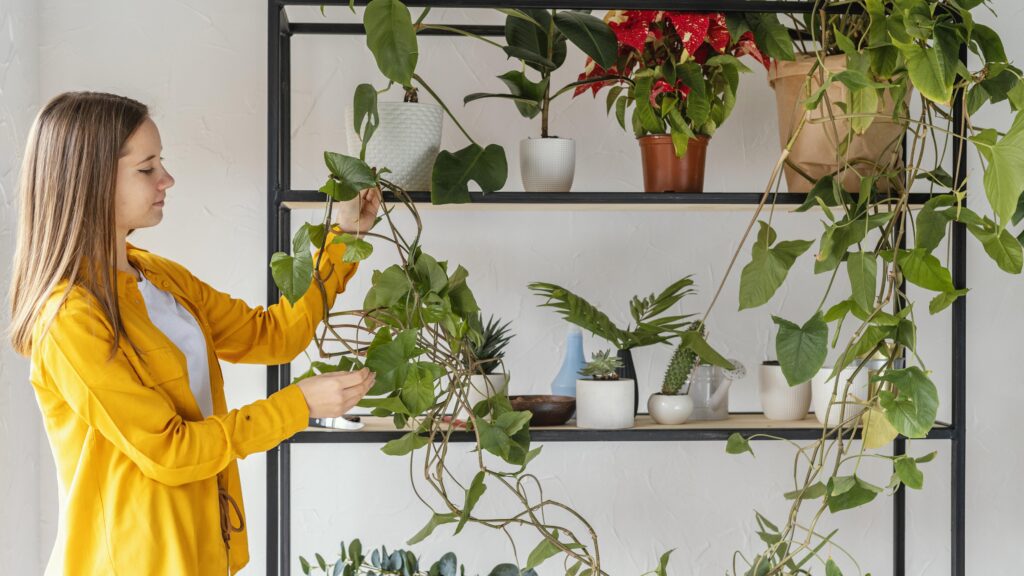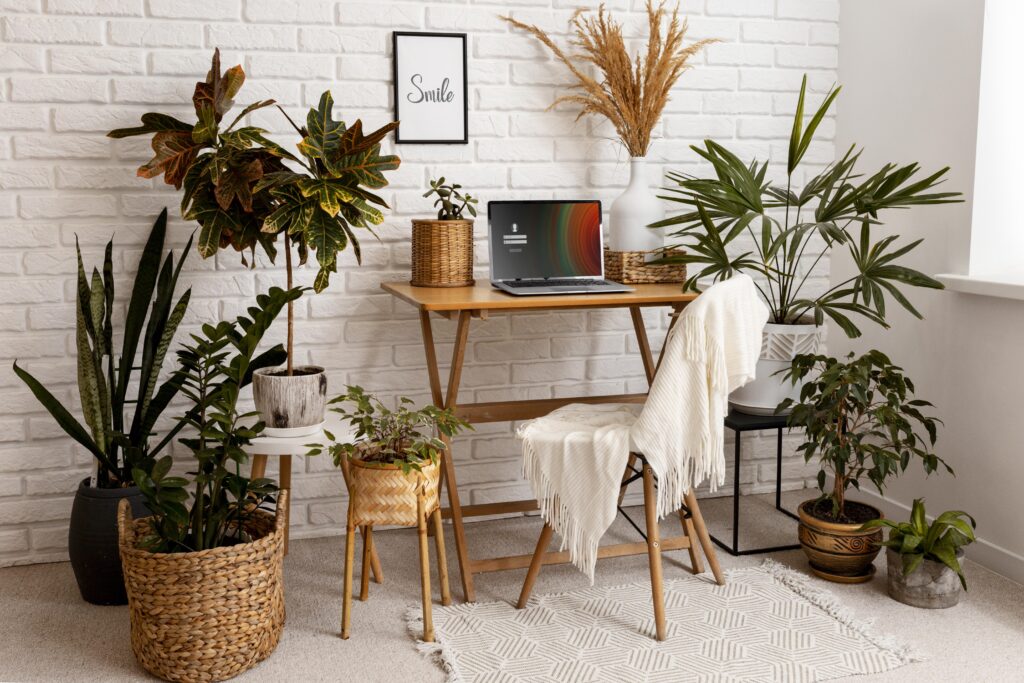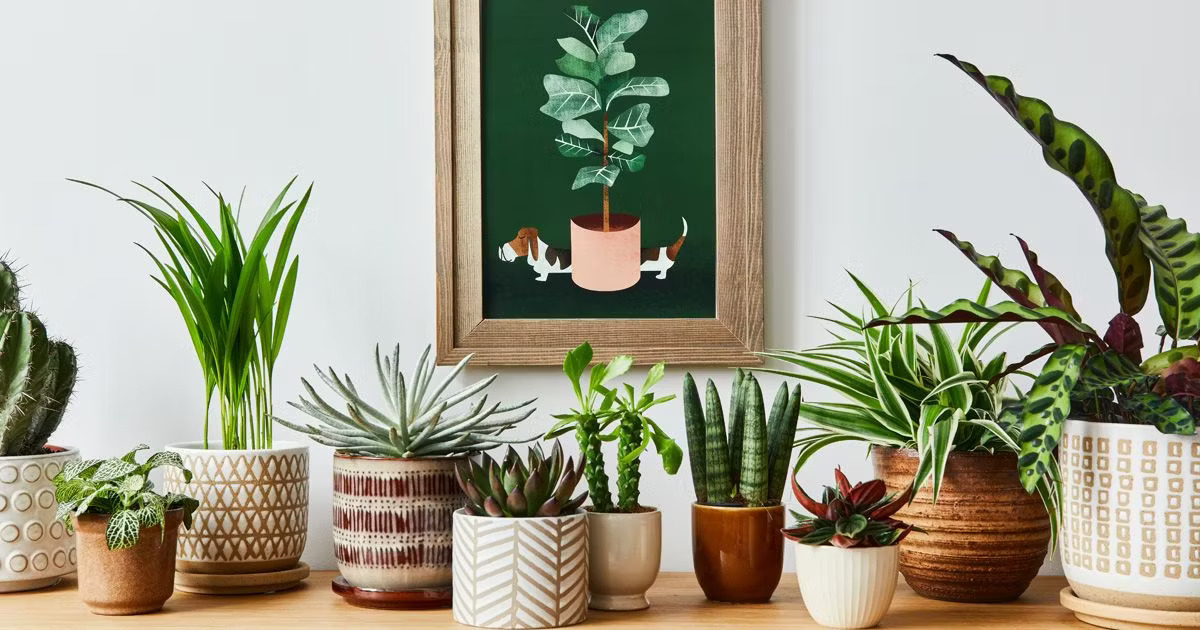

Bringing the beauty of nature indoors has become a popular trend in home decor, and indoor plants offer a perfect solution. Not only do they add a touch of greenery and serenity to your living spaces, but they also provide numerous health benefits, improve air quality, and create a refreshing ambiance. If you’re ready to transform your home into a lush oasis, this guide will provide you with practical tips and creative ideas on how to decorate your home with indoor plants.
Selecting The Right Plants Ror Your Space :


When it comes to choosing indoor plants, it’s essential to consider the specific conditions of your home. Assess the lighting conditions in each room and choose plants that thrive in “low light, moderate light, or bright, direct light.” Additionally, take into account factors like humidity levels and temperature variations to ensure the selected plants can thrive in your environment. If you’re new to indoor gardening, consider starting with low-maintenance plant varieties that are more forgiving and require minimal care.
Choosing Stylish Containers And Planters :
The containers and planters you choose can significantly impact the overall aesthetic of your indoor plant display. Explore different materials such as ceramic, terracotta, or decorative pots made from natural fibers. Consider the style of your home decor and choose containers that complement the overall theme. Don’t forget to ensure proper drainage by selecting pots with drainage holes or using a layer of gravel at the bottom to prevent waterlogging.
Creating Focal Points with Statement Plants :
Large, eye-catching plants can serve as captivating focal points in your home. Consider incorporating tall plants like fiddle leaf figs, palm trees, or bird of paradise in areas such as entryways, living rooms, or dining spaces. Their lush foliage and impressive stature instantly draw attention and add a dramatic element to your interior design. Use decorative stands or planters to elevate them and create visual interest.
Utilizing Different Sizes and Shapes for Visual Interest :
To create a visually appealing indoor plant display, experiment with plants of varying sizes and shapes. Combine tall floor plants with medium-sized tabletop varieties and incorporate trailing or cascading plants that can be placed on shelves or suspended from hanging planters. This layering effect adds depth and texture to your arrangements, making them more visually intriguing.
Incorporating Hanging Plants for Vertical Decor :
Hanging plants are an excellent way to utilize vertical space and add a dynamic element to your decor. Choose trailing or cascading plants like pothos, spider plants, or string of pearls and display them in hanging planters or macrame holders. Hang them near windows, in corners, or above furniture to create stunning green focal points that draw the eye upward.
Grouping Plants for Stunning Arrangements :


Grouping plants together is an effective technique to create impactful plant displays. Arrange plants with varying heights, textures, and colors to achieve a visually pleasing arrangement. Place them on shelves, windowsills, or dedicated stands, allowing them to interact and complement one another. This clustering approach mimics the natural beauty of plant communities and creates a lush and inviting atmosphere in your home.
Maximizing Vertical Space with Wall-Mounted Planters:
If you’re looking to maximize your space and add a touch of green to your walls, consider installing wall-mounted planters. These planters can transform vertical surfaces, such as empty walls or room dividers, into captivating green backdrops. Choose plants that are suitable for vertical growth, such as philodendrons, pothos, or ivy, and arrange them in an aesthetically pleasing and balanced manner
Decorating Neglected Areas with Small Plants:
Don’t overlook small or overlooked spaces when it comes to decorating with indoor plants. Spruce up neglected corners, shelves, or nooks with small potted plants. Opt for low-light tolerant plants like ZZ plants, snake plants, or peace lilies for areas with limited natural light. Air plants or terrariums are also excellent options for tight spaces, as they require minimal soil and can be displayed in unique glass containers or hanging globes.
Enhancing Specific Rooms with Suitable Plant Varieties:
Each room in your home has its own atmosphere and requirements, making it ideal for certain types of indoor plants. For bathrooms, consider plants that thrive in high humidity environments, such as ferns, spider plants, or orchids. In the kitchen, herb gardens or small potted herbs like basil, mint, or rosemary can add a fresh culinary touch. Bedrooms benefit from plants that promote relaxation, like lavender, jasmine, or aloe vera. Tailor your plant choices to the specific needs and ambiance of each room.
Maintaining and Caring for Your Indoor Plants:
Proper plant care is essential to keep your indoor plants thriving and looking their best. Understanding the specific needs of your plants in terms of light, water, and humidity is crucial. Ensure they receive adequate sunlight based on their light requirements—rotate plants periodically to promote even growth. Water your plants when the top inch of soil is dry, but avoid overwatering, as it can lead to root rot. Consider misting your plants or using a humidifier to maintain optimal humidity levels, especially during dry seasons. Regularly inspect your plants for signs of pests or diseases and take appropriate action to prevent any issues from spreading.
Styling Tips and Inspiration for Different Interior Design Styles:
Indoor plants can complement various interior design styles, adding a unique touch to your decor. For a modern and minimalist aesthetic, opt for sleek planters and minimalist plant arrangements with clean lines. Bohemian or eclectic styles embrace an abundance of plants, mixing different textures and colors in lush displays. Scandinavian design often incorporates natural elements, such as small clusters of potted plants in light-colored pots. Industrial-inspired spaces can benefit from larger, structural plants like rubber trees or monstera deliciosa, adding a touch of green against raw materials. Consider the overall style of your home and choose plants and containers that harmonize with the existing decor.
Showcasing Plants in Creative DIY Displays:
Get creative with displaying your indoor plants by incorporating DIY projects. Build your own plant stands using wooden crates, copper pipes, or repurposed materials. Explore vertical plant walls made from pallets or hanging shelves crafted from macrame or reclaimed wood. Create terrariums using glass containers, stones, and small succulents for a miniature garden effect. DIY plant displays add a personal touch and allow you to customize your plant decor to suit your style and space.
Overcoming Common Challenges in Indoor Plant Decor:
Indoor gardening comes with its share of challenges, but with proper knowledge and care, you can overcome them. Common challenges include issues like overwatering, inadequate lighting, pests, or plant diseases. Educate yourself about the specific needs of your plants, research common problems, and seek solutions tailored to your plant species. Be proactive in monitoring your plants’ health, and don’t hesitate to seek advice from plant experts or join online communities where you can share experiences and gain valuable insights.
Incorporating Indoor Plants in Workspaces and Home Offices:


Indoor plants can greatly enhance the atmosphere and productivity of workspaces. Introduce small potted plants or desk-friendly varieties like succulents, cacti
“In conclusion” decorating your home with indoor plants is a delightful way to bring the beauty of nature indoors and create a harmonious and refreshing atmosphere. By carefully selecting the right plants for your space, choosing stylish containers and planters, and incorporating different sizes and shapes for visual interest, you can create stunning plant displays that enhance your home’s aesthetics. Hanging plants, grouping plants, and utilizing wall-mounted planters allow you to maximize vertical space and add unique focal points to your decor. Additionally, don’t overlook neglected areas and consider the specific needs of each room when selecting plant varieties. Remember to maintain and care for your indoor plants by providing them with appropriate lighting, watering, and humidity levels. Explore different interior design styles and get creative with DIY plant displays to personalize your decor. Overcoming common challenges in indoor plant care will ensure the health and longevity of your plants. Lastly, incorporating indoor plants in workspaces and home offices can improve productivity and create a calming environment. So, embark on your indoor plant journey and embrace the joy of cultivating a greener and more vibrant home.

